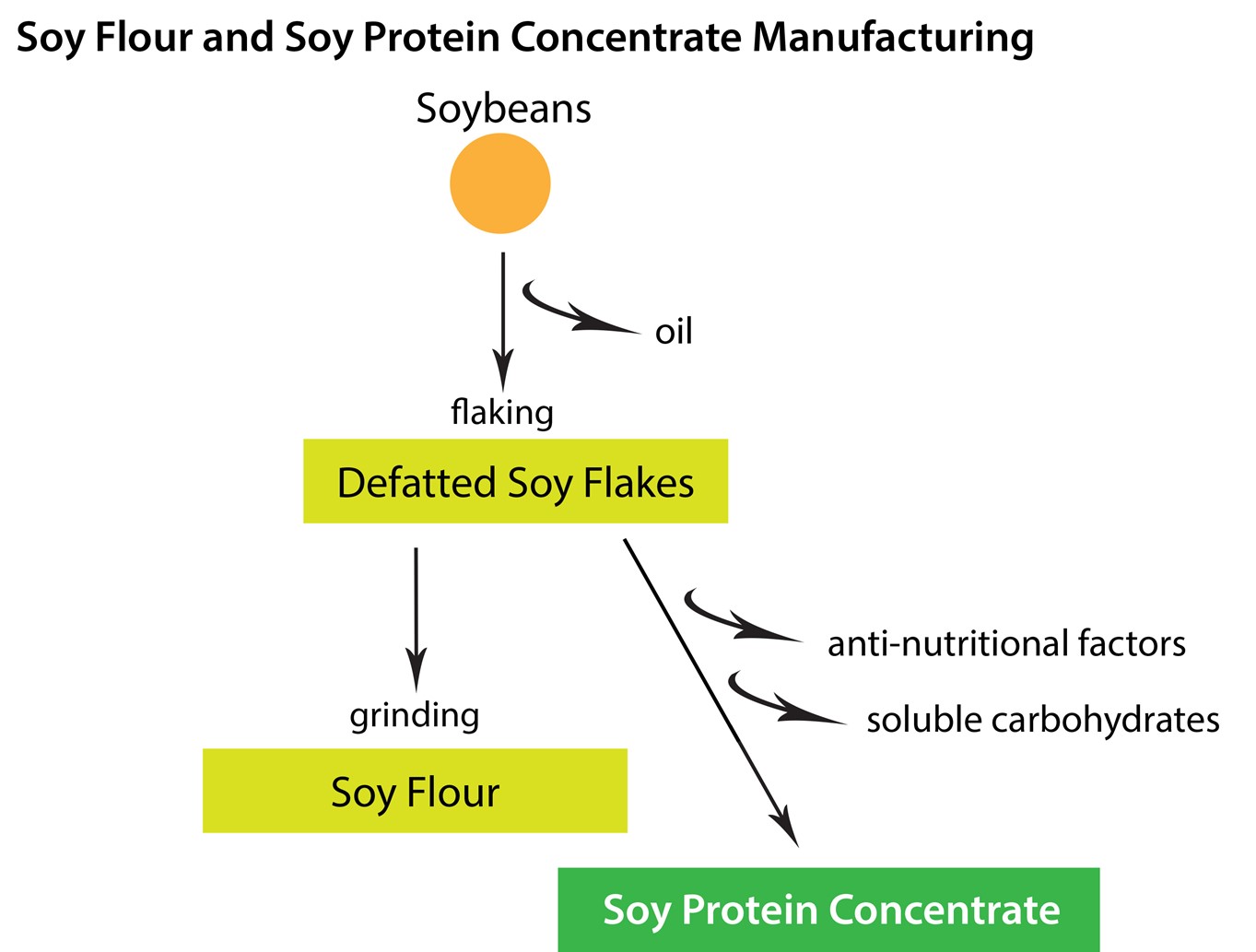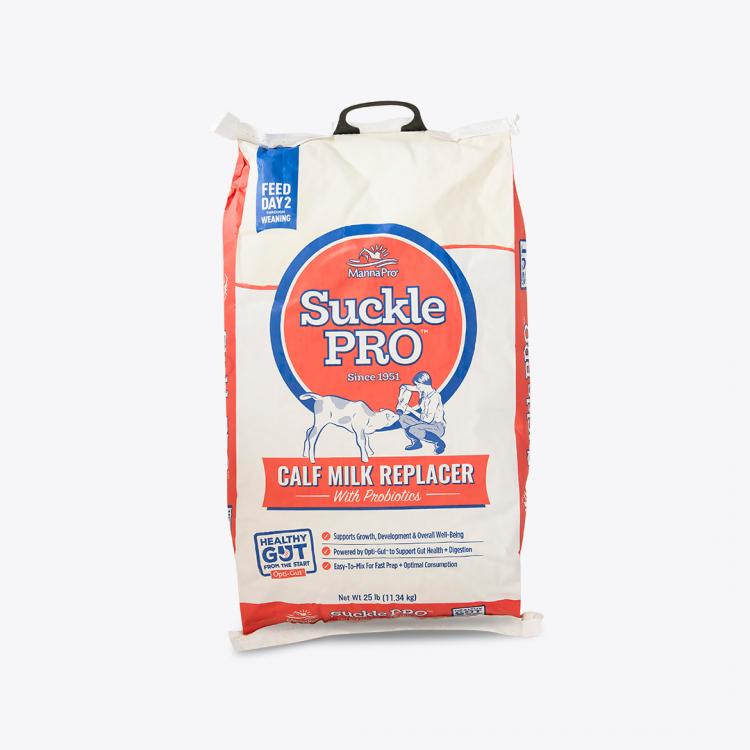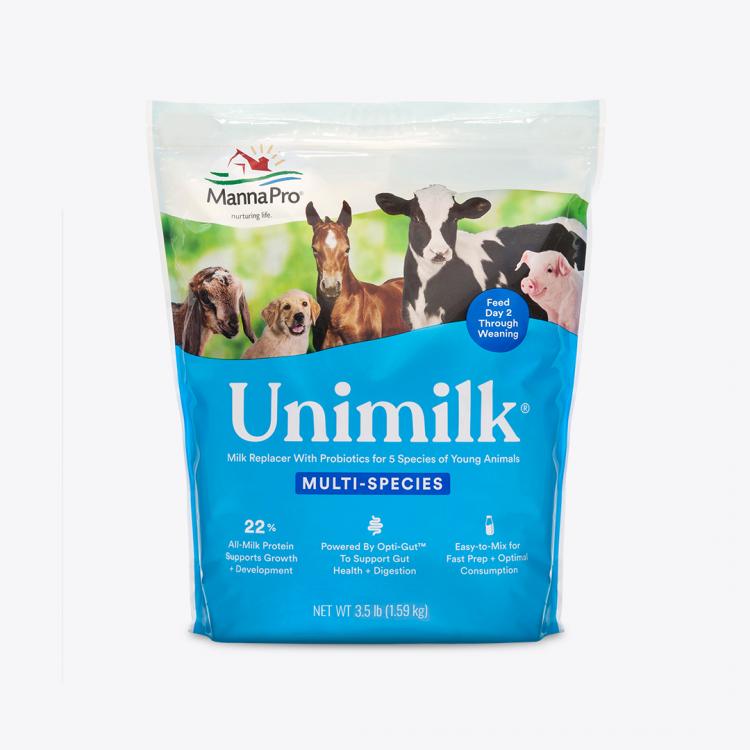Milk ingredients are in high demand around the world, putting economic pressure on their use in animal feeds. Milk proteins are in particularly high demand. As a result, non-milk proteins are often used in milk replacers to replace a portion of the milk proteins. Soy products have a long history in milk replacer formulations. Their popularity stems from their widespread availability, competitive cost, and favorable amino acid profile.
Soy Protein Concentrate (SPC) and Soy Flour (SF) are the most common soy proteins used in milk replacers. Their effect on calf growth and digestive health vary, which can be explained by how these ingredients are made and what they do or do not include.
Soybeans destined for use in milk replacers are processed by grinding, followed by oil extraction. The resulting defatted soy flakes are then fine ground into SF or further processed to SPC.

Raw soybeans contain substances commonly known as anti-nutritional factors. These include antigens, enzyme inhibitors, and phytic acid and can have adverse effects on a young animal’s digestive tract. They can cause allergic reactions, inflammation, and damage the tissue that lines the small intestine, impairing nutrient digestion and absorption. All of this can cause the rate at which food passes through the digestive tract to slow down, increasing exposure time to these anti-nutritional factors.
Another constituent of concern with soybeans when feeding young calves is soluble carbohydrates. Young calves with an immature digestive tract cannot digest these compounds effectively. Thus, a large share of them pass to the large intestine where they are fermented by the microbial population found there. This increase in metabolites in the large intestine pulls water from the calf’s body into the digestive tract. Because the calf can’t effectively absorb these metabolites, a form of diarrhea called nutritional scours can occur.
Grinding the defatted soy flakes into SF does not remove any anti-nutritional factors or soluble carbohydrates; additional processing steps are needed to achieve this. As a result, SPC is much easier on the young calf’s digestive tract. The calf’s ability to handle these anti-nutritional factors and soluble carbohydrates does improve as it gets a little older and its digestive tract begins to mature. Once the calf is over three weeks old, it can better cope with these challenges.
When you compare components of SF and SPC, the most obvious difference is protein. SPC is 20 percentage points higher in protein than SF.

The table also shows the reduction in soluble carbohydrates due to further processing. SPC is much lower in soluble carbohydrates than SF (5% vs 20%). The last column, Glycinin Antigen, represents the anti-nutritional factors. There is an eight-fold decrease in this undesirable component when soy flakes are processed to SPC.
Although not shown on the manufacturing chart, Soy Protein Isolate (SPI) another soy protein source that is sometimes used in milk replacer formulations and deserves mention. It is mainly used in human nutrition. Like SPC, it goes through additional processing. Proteins are extracted and separated resulting in a product that is 90% protein. SPI also contains much less fiber and soluble carbohydrates than SPC.
When it comes to calf care, there is an abundance of research that shows significant reductions in calf performance and gut health when naturally occurring anti-nutritional factors in soy are not removed. Milk replacers containing SPC or SPI can be fed to calves successfully once colostrum feeding is completed. Caring for a bottle calf can be challenging enough without making things more difficult for the calf, so it’s best to refrain from feeding milk replacers with SF until the calf is at least three weeks old. And by three weeks of age, the calf should be consuming protein from other sources such as starter feed.
So, start your calves right. Suckle Pro milk replacer from Manna Pro is made with high quality soy protein concentrate and other ingredients to deliver calf growth and performance with confidence.


